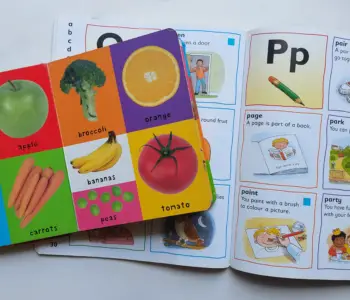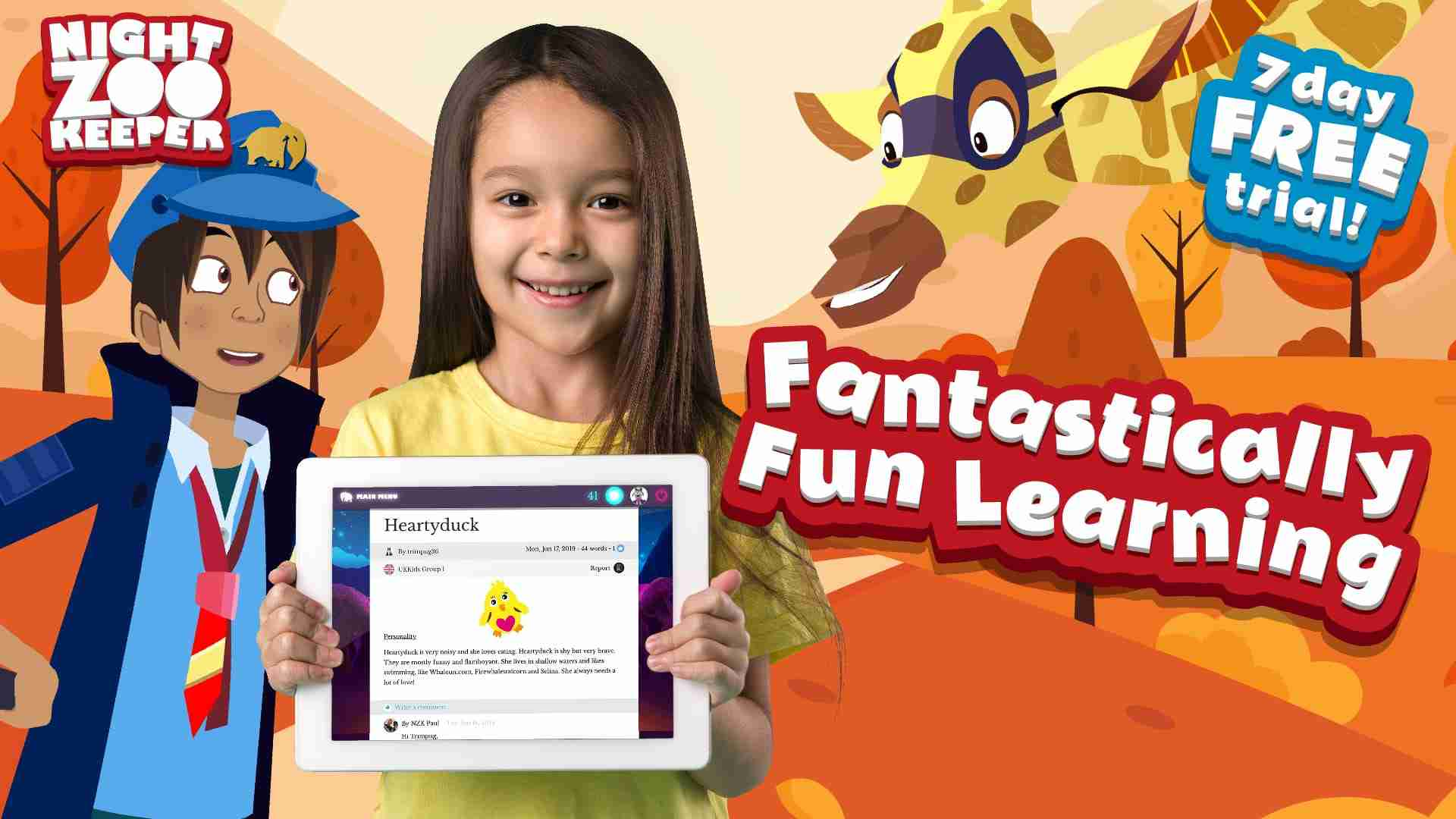An English dictionary is a valuable resource for a child: from teaching basic words to young learners to expanding the vocabulary of kids in high school.
But it can be challenging to find the best dictionary for kids of different ages, abilities, and learning styles. Is it important for it to have pictures? Should it be portable, so they can carry it around easily? And do you want it to include a thesaurus and grammar guide, too?
In this article, we review the top children’s dictionaries printed as books so you can pick one that suits your family or classroom.
Here’s a quick overview of our top picks, but you’ll find more information about these and more options below.
| Dictionary | Best for | Details | More info |
|---|---|---|---|
 |
| Check Price | |
 |
| Check Price | |
 |
| Check Price | |
 |
| Check Price | |
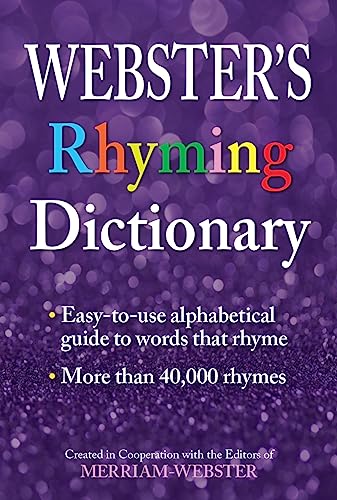 |
| Check Price | |
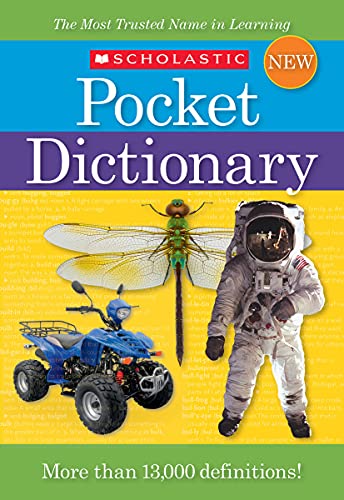 |
| Check Price | |
 |
| Check Price |
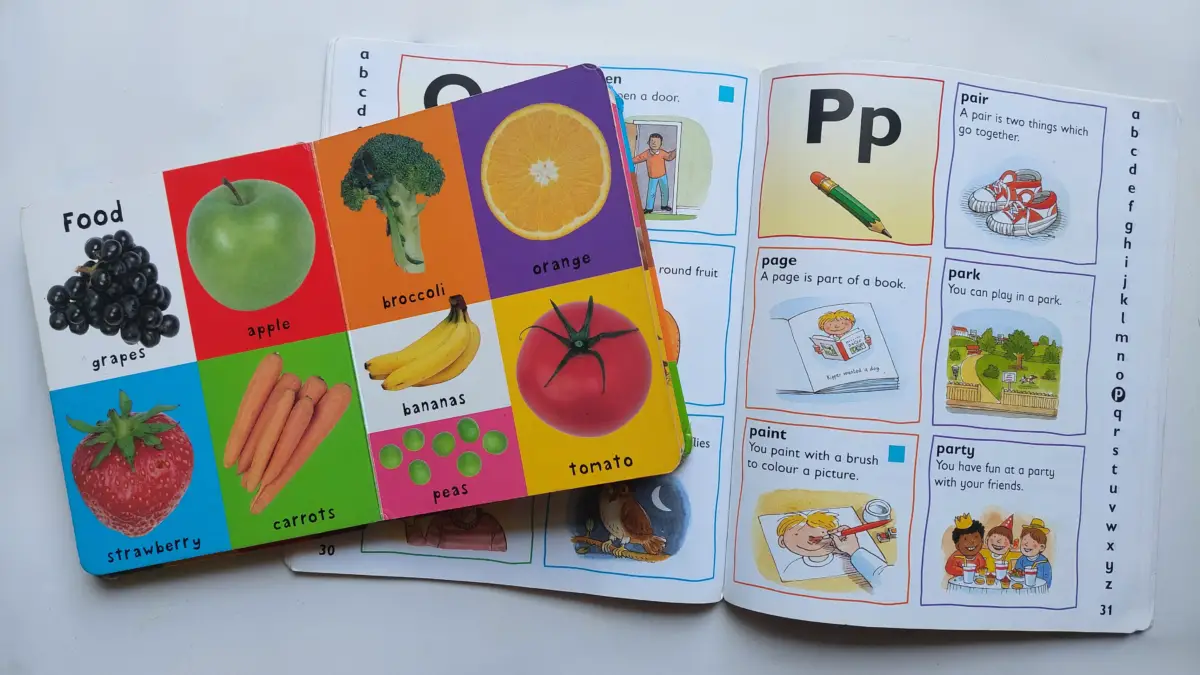
21 of the best dictionaries for kids
Although it’s easy to look up word definitions online or just ask a virtual assistant, there is a lot to be said for still having a physical children’s dictionary book.
As a child flicks through the pages of a dictionary to look up a word, they learn about alphabetization and probably discover some other new words as they reach the one they were looking for.
So, let’s begin with some of the best traditional dictionaries for kids.
Merriam-Webster’s Elementary Dictionary

Best for: Elementary and middle school students (ages 8-11)
Contains: 36,000+ words, 900+ illustrations, photographs & diagrams to bring definitions to life (824 pages)
Highlights: Although recommended for ages 8-11, this simple children’s dictionary is comprehensive enough to last well beyond that and into high school. Many of the definitions include real-life quotes from literary works so children can see how the words are actually used.
For younger kids, the Merriam-Webster Children’s Dictionary has about the same number of entries but is more image-heavy. This makes it suitable for children aged 7-9, but they might grow out of it more quickly than the elementary version.
Note that both of these Merriam-Webster dictionaries display word pronunciation with IPA symbols. For example, ‘achieve’ is shown as \ə-‘chēv\. In contrast, the Scholastic Children’s Dictionary (below) shows simpler phonetic pronunciation: (uh-cheev). You should consider whether IPA symbols will be a help or a hindrance given your child’s age and developmental stage.
Scholastic Children’s Dictionary (including thesaurus)

Best for: Elementary students (ages 6+)
Contains: 30,000+ words, 1,000+ illustrations, pronunciation guide, grammar guide, thesaurus (880 pages)
Highlights: This is the best dictionary for children that includes a thesaurus and guides to grammar, pronunciation, idioms, and more. It’s a really comprehensive reference tool that will help them dive deeper into understanding the language, beyond just looking up words.
Its bright and colorful cover and interior make it appealing for kids from ages 6 and up, and it’s full of illustrations and photographs as well as notes about word history, prefixes and suffixes, and casual vs formal word usage.
Merriam-Webster’s Intermediate Dictionary (for middle school kids)

Best for: Upper elementary and middle school students (ages 11-14)
Contains: 70,000+ words, 23,000+ usage examples, 1,000+ illustrations (1,024 pages)
Highlights: The stepping-stone between a picture dictionary and a classic dictionary format, this is the best children’s dictionary with advanced words but simple, easy definitions.
Merriam-Webster’s Intermediate Dictionary introduces a much wider vocabulary – including terms relating to technology, social media, health, and science – which makes it a solid choice for kids doing school projects at this age.
Black-and-white illustrations on most pages mean the dictionary is visually appealing enough to keep kids interested, without detracting too much from the word definitions and notes on spelling and punctuation.
Merriam-Webster’s School Dictionary

Best for: High school students (ages 14+)
Contains: 100,000+ words, 28,000+ usage examples, hundreds of word notes and illustrations (1,280 pages)
Highlights: Although this dictionary is designed for older teens, many parents consider it suitable for kids of all ages, as young 3rd and 4th graders.
There is certainly something to be said for just buying one dictionary for your kids to last through high school, rather than switching to a new one every few years. However, young readers will need more help understanding the definitions and will need to filter through more difficult words to find the ones they really need.
The American Heritage Children’s Dictionary

Best for: Upper elementary and middle school students (ages 8+)
Contains: 25,000+ words, 1,650 color photos and illustrations, hundreds of word note boxes (896 pages)
Highlights: The American Heritage Children’s Dictionary was last updated in 2018, making it slightly less modern than the other options mentioned above. However, it’s still the dictionary of choice for many parents and teachers, with its colorful illustrations and easy-to-understand definitions, many of which include example sentences.
The book includes additional reference guides to parts of speech, phonics, maps, and measurements.
Scholastic Pocket Dictionary of Synonyms, Antonyms & Homonyms

Best for: Middle school students and ESL learners
Contains: 12,000+ synonyms, 10,000+ antonyms (opposites), 2,000 homonyms (240 pages)
Highlights: More of a thesaurus than a dictionary, this is still a useful learning tool for children aged 7 and above. It will help them develop a better vocabulary through discovering synonyms and related words.
The homonyms section is also very helpful for distinguishing between words that sound the same but are spelled differently, such as affect vs effect and compliment vs complement.
Anyone learning English as a second language will also find this book helpful, although there are other specialist ESL dictionaries to consider, too.
Best rhyming dictionary for kids: Webster’s Rhyming Dictionary

Best for: Older children wanting to find rhyming words for poems, raps, etc.
Contains: Over 40,000 words, arranged by rhyming sounds and number of syllables (224 pages)
Highlights: If your child has an interest in writing poems, song lyrics, raps, or anything else that rhymes, this dictionary will be an enormous help. Not only does it assist with unobvious rhymes like ‘drew’ and ‘through’, but it groups them by syllable length, so you can see that ‘sportsmanlike’ rhymes with ‘take a hike’.
Although it’s marketed as a rhyming dictionary for students, it’s a perfectly good resource for adults, too. Some other ‘grown-up’ rhyming dictionaries contain 60,000 to 70,000 words, by comparison.
Oxford Children’s Rhyming Words

Best for: Younger kids (ages 5-9) learning to write poems and recognize rhyming words
Contains: Thousands of rhyming words, illustrations, poems, and creative writing prompts
Highlights: This illustrated rhyming dictionary is suitable for elementary school children. It’s packed with fun illustrations and tips for writing poems, stories, and rhymes, so will help improve their writing skills as well as their vocabulary and spelling.
Best pocket dictionary for children: Scholastic Pocket Dictionary

Best for: Kids who need a portable dictionary to take to school
Contains: 13,000+ words, simplified pronunciation (672 pages)
Highlights: Measuring 5.5 x 7.8 inches (14 x 19 cm), this kids’ dictionary is not exactly pocket-sized, but it’s definitely portable compared to the full-size volumes featured above. Despite being smaller in size, it still contains decent guides to grammar, pronunciation, idioms, and capitalization.
If you’re looking for a dictionary that your child can carry to school fairly easily, this is a good choice.
Best picture dictionaries for kids
Illustrated dictionaries are great for young kids, late readers, and children learning English as a second language.
First 100 Words (padded board book)

Best for: Babies and very young children
Contains: 100 basic words with photos
Highlights: This baby book is a wonderful introduction to the English language, and with over 1 million copies sold worldwide, it’s safe to say it’s a firm favorite with hundreds of thousands of families.
Each of the 100 words is illustrated with a photo on a bright background, so this book is also helpful for introducing colors to kids long before they can read letters of the alphabet.

My First 1000 Words

Best for: Young children and English learners
Contains: 1,000 words illustrated with photos (96 pages)
Highlights: This is a good English dictionary for kids who are too young to read full definitions but are learning how to recognize and spell individual words.
Each word is illustrated with a photograph, making it easy for kids to understand even more abstract concepts like touch, taste, and smell. Words are grouped according to topic.
Do be aware that the book features British English terms and spelling, so you’ll encounter ‘lorry’, ‘digger’, and ‘zip’ as you read.
Children’s Dictionary: 3,000 Words, Pictures & Definitions

Best for: Ages 4-8
Contains: Thousands of word definitions, the majority with picture illustrations (128 pages)
Highlights: This is a good starter dictionary for kids who are just learning to read and learn different words and develop dictionary skills. The abundance of pictures makes it a fun learning tool, and it also introduces different parts of speech, with each word labeled as a noun, verb, adjective, etc.
One criticism of this children’s picture dictionary is its lack of diversity; there are almost no people of color depicted in the book and it is in need of an update in this regard.
Merriam-Webster’s Intermediate Visual Dictionary

Best for: Upper elementary and middle school students; English learners
Contains: 12,000+ words, 2,000+ illustrations (288 pages)
Highlights: All of the words in this dictionary are grouped by topic – 60 of them in total – ranging from school subjects to sports to things at home. There is a full index so you can easily check if a word is included, and on which page.
For each topic, there are reference boxes that contain additional words and phrases related to the subject. These are helpful for expanding vocabulary, but as they don’t include definitions, they may just confuse some readers.
Some other fun word reference books for kids
While we’re looking at books that help teach kids new words, here are a few other great ones that deserve a mention, even if they are not dictionaries in the strictest sense.
- Science Dictionary for Kids: Hundreds of science-related words with definitions and illustrations for easier comprehension.
- Space Dictionary for Kids: A must for any child who wants to learn more about space and astronomy, this dictionary is packed with information, diagrams, and new vocabulary.
- Once Upon a Word: A Word-Origin Dictionary for Kids: A great book for kids to learn more about the English language and where various words came from. Helps them recognize word roots, while fun origin stories keep them entertained.
- Storyteller’s Illustrated Dictionary: Give your budding young writer a boost with this book that helps them think of the right word to describe characters, settings, emotions, and actions.
- The Dictionary of Difficult Words: This book is designed for kids but contains over 400 words that most adults don’t know! A fun gift for older kids who have shown a real passion for the language.
- My First 100 Engineering Words: A picture dictionary with words that relate to engineering; a great way to introduce these concepts to young children.
- Britannica All New Kids’ Encyclopedia: The latest version of the classic encyclopedia that will open up kids’ minds to all things historical, scientific, and natural.
Other dictionary options for children
Of course, children are not confined to looking up words in a big book these days. There are online dictionaries, electronic dictionaries, and even dictionary apps that can help them out.
These tools can be very useful for certain purposes, but a physical, printed dictionary offers other benefits that can’t be found with an online or electronic version.
For example, every time a child looks up a word in a dictionary, they are developing their alphabetization and scanning skills. They’ll also pick up new words as they read through listings, and may find interesting facts or other notes to provide a better understanding of certain words.
With this in mind, we hope you have enjoyed this guide to the best dictionary for kids to use. Perhaps more importantly, we hope your child enjoys using whichever dictionary you select for them!
Check out some more good gifts for kids learning English here, or browse more product guides below.

What are the best dictionaries for kids of different ages? 21 recommended children’s dictionaries

14 Thoughtful English gifts for language lovers

15 English grammar gifts for the language nerds in your life

The best educational games, toys and gifts for kids learning English

The best English learner’s dictionaries for improved ESL vocabulary and more

30 Best games to learn English online and at home: Fun ESL games for kids and adults


